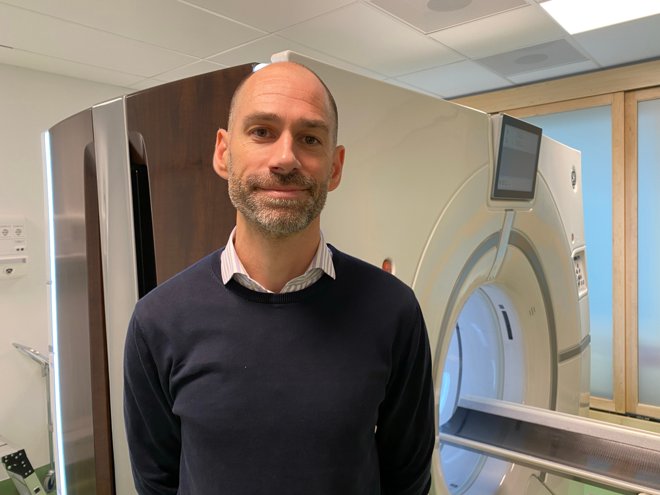“Photon counting in computed tomography is the holy grail”
The project lasts 6 years and is funded with a grant from the Foundation for Strategic Research, SSF. After the 6 years, Erik Fredenberg, Adjunct Professor of Physics at KTH and Principal Scientist at GE, hopes that he will have a ready-made framework to be regularly used to conduct virtual clinical trials.
“Photon counting is the next-generation detector technology in computed tomography. The difference from earlier technology is that we are now detecting the radiation directly, meaning that we do not need to convert the X-ray beam into light, which is then detected. Furthermore, the technology we have available now is fast enough to count the photons, and this is very hot in the X-ray imaging industry,” he says.
The advantages of photon-counting CT are that you reduce the noise and increase the spatial resolution, allowing you to see finer details. Since each photon is detected individually, you can measure the radiation’s wavelength or energy, which in turn can provide additional information. This could be, e.g. an evaluation of the different tumour characteristics or detecting the difference between plaque and iodine contrast agents in the carotid vessels.
“The technology is brand new and has not yet been used in practice to a considerable extent, but there is good evidence that we will be able to improve the X-ray examination in many different ways.”
So, photon-counting computed tomography is hot, but virtual clinical trials are also trending.
“The idea is that our knowledge of image creation is good enough for us to be able to simulate the entire process, from the basic physics of imaging to the detector and the image chain up to the finished image, and even how the radiologist sees the image,” he says.
When investigating new applications for photon-counting CT, this gives us the opportunity to sift and fine-tune to replace parts that are typically tested in clinical trials, and the most promising parts can proceed to a clinical trial.
“Clinical trials are expensive, time-consuming, and furthermore, in our case, you expose patients to a dose of radiation. Naturally, we do want clinical trials, but not unnecessary ones. The possibility to simulate parts in silico instead of in vivo offers many advantages.”
Erik Fredenberg initiated the project in August this year, so the first virtual clinical trials won´t be ready to run for a while. Additionally, he only spends one day a week on the research project and devotes the remaining time to product development.
“Photon counting has been on the rise for many years. All the big dragons are working on this in CT, which is the next paradigm shift. In other types of X-ray imaging, photon counting has been around for quite a few years, but computed tomography is the holy grail – if you can do this, you can do anything in X-ray imaging.”
Artikeln är en del av vårt tema om News in English.

